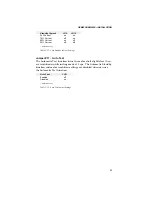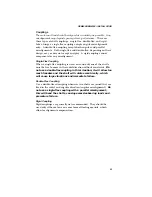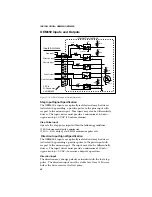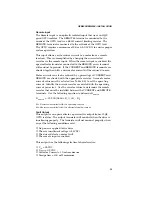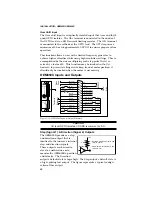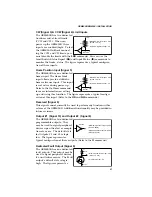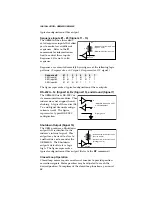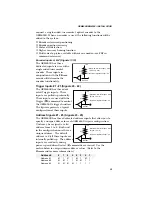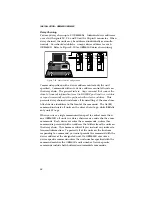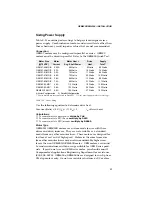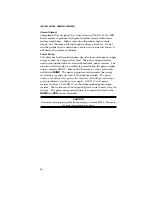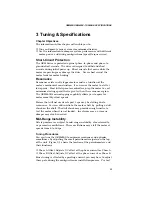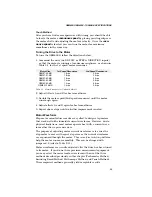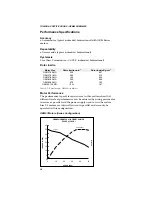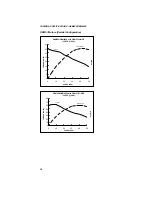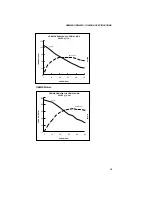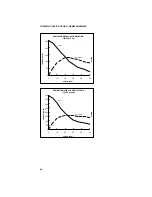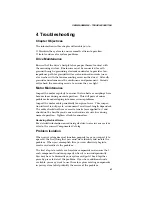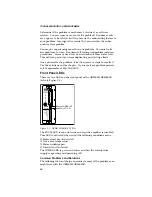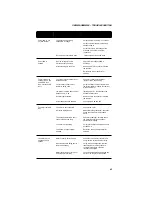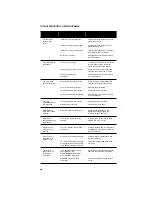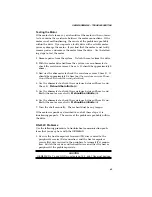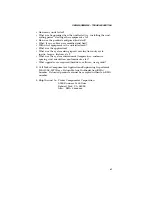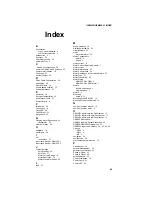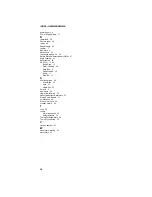
OEM650/OEM650X • TUNING & SPECIFICATIONS
35
Touch Method
After you have had some experience with tuning, you should be able
to locate the motor’s
resonance speed
by placing your fingertips on
the motor shaft and adjusting the motor’s velocity. Once the
reso-
nance speed
is located, you can tune the motor for maximum
smoothness in the same way.
Tuning the Drive to the Motor
To tune the OEM650X, follow the directions below:
1. Command the drive (via RS-232C or STEP & DIRECTION inputs)
so that the motor is running at maximum roughness, as shown in
Table 3-1 for the 1st speed motor resonance.
Motor Size
1st Speed Resonance
2nd Speed Resonance
OEM57-40-MO
1.8 rps
3.6 rps
OEM57-51-MO
1.8 rps
3.6 rps
OEM57-83-MO
1.8 rps
3.6 rps
OEM83-62-MO
1.4 rps
2.8 rps
OEM83-93-MO
1.4 rps
2.8 rps
OEM83-135-MO
1.4 rps
2.8 rps
Table 3-1. Motor Resonance for Unloaded Motors
2. Adjust Offsets A and B for best smoothness.
3. Double the motor speed (2nd speed resonance) until the motor
runs rough again.
4. Adjust offsets A and B again for best smoothness.
5. Repeat above steps until no further improvement is noted.
Motor Waveforms
Step motor manufacturers make every effort to design step motors
that work well with sinusoidal current waveforms. However, due to
physical limitations, most motors operate best with a current wave-
form other than a pure sine wave.
The purpose of adjusting motor current waveforms is to cause the
step motor to move with equal step sizes as the current waveforms
are sequenced through the motor. This
waveform matching
will also
help the motor run more smoothly. This can be changed with
jumpers 6-8 (refer to Table 2-11).
Motor waveforms are usually adjusted after the drive has been tuned
to its motor. If you do not have precision measurement equipment,
you may select the correct motor waveform with one of the three
methods described previously in this chapter (Tachometer Method,
Sounding Board Method, Stethoscope Method, and Touch Method).
These empirical methods generally yield acceptable results.

